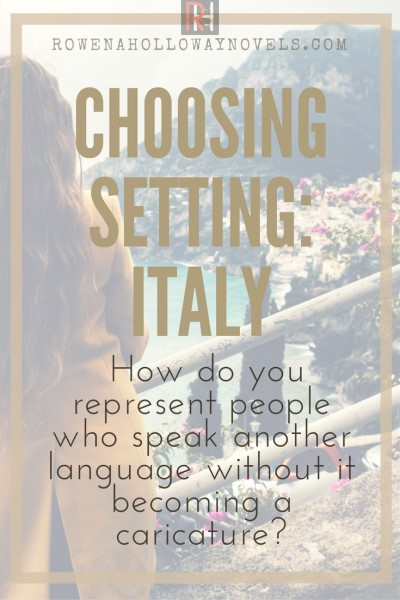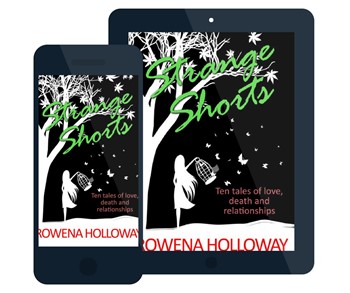Why Italy? When I look back I can see that choosing to set All That’s Left Unsaid in Italy was a no-brainer. But when I first sketched out the idea (all those long years ago!) I had no inkling that’s where it would be.
I’ve previously shared with you some of the setting inspirations for Pieces of a Lie, which I set in my local area (with some artistic license taken for the sake of story). It was great to reconnect with the place I spent most of my formative years.

Today, I thought I’d share with you why I chose to set All That’s Left Unsaid in Italy. To be precise: Positano. Really, it speaks for itself. I mean, it’s Italy!
But seriously, as Hitchcock said, setting is as much a part of the story as the plot. So the choice of Italy was more about the story than the romance of the destination. I had been to Italy on the Grand Tour in my early twenties and so I could draw on my memories, and thanks to travel blogs and Google Maps I got to relive and expand those experiences from my office.
So Why Italy?
The kernel for the idea behind this novel came from something my mother used to say. Mum had been a nanny in Tripoli in the 50s and being a young expat and a bit of a party girl she made many friends, but there was one friend in particular she really missed, a French-Canadian girl named Jacquie. Over the years, they had somehow lost touch and one of things I remember Mum doing most often is sighing and saying, ‘I wish I knew what happened to my friend Jacquie’.
When I decided I wanted to write seriously, this comment had been sitting in my thoughts and when I asked myself the inevitable ‘what if’ questions it took on a new life: What if that friend hadn’t just lost touch but there was some mystery attached to her silence? What if the mother knew that mystery but had never spoken of it?
I knew there was a story there, and I knew I wanted it to be set overseas. Somewhere exotic, somewhere equally beautiful and sinister.
This is where my experiences come into play.

Looking but not being Italian
All through my life it’s been assumed that I am of Italian origin. People used to be shocked to learn both my parents are English. I don’t exactly look like the typical English rose. Of course, it’s thanks to the Roman occupation of the south way back when, but I didn’t know that growing up.
This idea that I was of Italian extraction really came to the fore when I left school to start my apprenticeship—as a hairdresser. The old ladies would pat me on the cheek and speak to me incomprehensibly and when I didn’t understand they’d frown, dismayed that my parents had neglected my schooling by not teaching me the language. As a hairdresser most of my friends were first generation Italian-Australian and so I became aware not just of large families, but of the loud, warm, welcoming culture within them.
Unsurprisingly I became fascinated by the romance of Italy and its people.
Movies and Robert Downey Jnr
In the 90s one of my favourite movies was Only You, with Robert Downey Jnr and Marissa Tomei. Maybe it was RD Jnr’s soulful gaze, maybe it was Billy Zane with his hot bod and hairpiece, but I instantly I fell in love with the setting: Positano. What an amazing place. The cobblestones, the blue water, and of course, the handsome men. And all those alleyways and shadowed piazzas where anything could happen? Perfect.
Back then I wasn’t thinking about writing so it never occurred to me as a setting, but the images never left me. And when I was looking around for a suitable setting those images were waiting. Yet it wasn’t until I saw Under the Tuscan Sun that I realised the perfect setting was Positano.
So I had my location. But choosing Italy threw up a whole lot of other problems I hadn’t anticipated.
Doing the setting justice
One was how was I going to do the location justice? I hadn’t been to Italy in well over a decade and we never got as far south as Positano. Thankfully there are lots of travel blogs, photos and even cctv cameras with live feeds I could tap into. Thank you google earth!
Still, accurately representing the landscape was one thing. My biggest dilemma was this: How do I represent people who speak another language without it becoming a caricature? How do I communicate to you, the reader, what is being said in Italian when Harriet doesn’t speak the language?
Well, this is where I prove to you how dedicated I am to my craft.
The Research
First, I looked at how other authors did it. How did they as outsiders write so eloquently about foreign lands? I found my way to Hemmingway and For Whom the Bell Tolls. I noticed that he rendered the Spanish in English, but retained the European sentence structure. In English we have subject-verb-object. In European languages like Spanish and Italian the verb is most often at the end of the sentence. But still, Italian was oblique. Back then I couldn’t even understand an Italian menu.
The Lessons
So I signed up to Italian lessons at the WEA. I started with the 8 week course Italian For Fun and Travel. Then I enrolled in a year-long course and in the process learned about the culture from my teacher, a real Italian. She shared lots of little things, like the after dinner sogiorno and it’s role in maintaining village relations (the local grapevine), that Signora isn’t just for married women but for any woman over twenty, as a sign of respect. From Penelope Green’s memoir (an ex-pat Aussie living in Rome) I learned that young Italian women are effortlessly elegant, that all Italian men flirt, and their wives and girlfriends are secure enough not to feel threatened though they are not adverse to whacking their partner around the head when they go too far.
All of those snippets and more I put into All That’s Left Unsaid.
Serendipity
Italy is a place so rich with history that I was spoiled for choice about locations that can be rendered both beautiful and creepy by context. What I didn’t realise was how many themes Italian history allowed for, themes that worked beautifully with the story as it began to unfold. I could not believe how well the story of Tiberius gelled with Harriet’s work trauma. When I learned that Positano, because it was worthless as agricultural land, had most often been settled on the daughters, I loved the feminist synergy of that with Harriet finding her own strength. And some of the clues I plant, like the colour of the van and what Gennaro calls Harriet, I could not have done without learning the language.
Of course, all that meant it took a very long time to get this book right. I hope that I’ve created a story that is not just a page-turner but one that evokes the flavour, colour and life of Italy.
 I am currently tossing around an idea for a prequel–more of the family secrets that drove Harriet to find the truth about her mother’s past, what happened to her father and why her mother felt she had to keep her life in Italy a secret.
I am currently tossing around an idea for a prequel–more of the family secrets that drove Harriet to find the truth about her mother’s past, what happened to her father and why her mother felt she had to keep her life in Italy a secret.
What do you think? Is that something you’d like to read?
If you enjoyed this article, why not join my suspense community? I share with you my favourite books, latest news and reviews, and each newsletter includes an article about writing, reading or the inspiration behind one of my novels. And as a community member you get this before anyone else. You can also grab a free eBook anthology of short stories by yours truly!

Ten gripping tales of love and relationships. Includes tasters of each of my novels.
YES! SEND ME MY FREE BOOK
